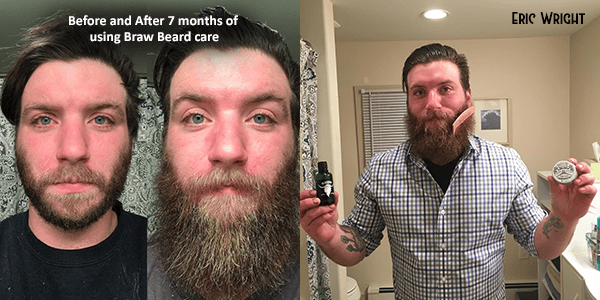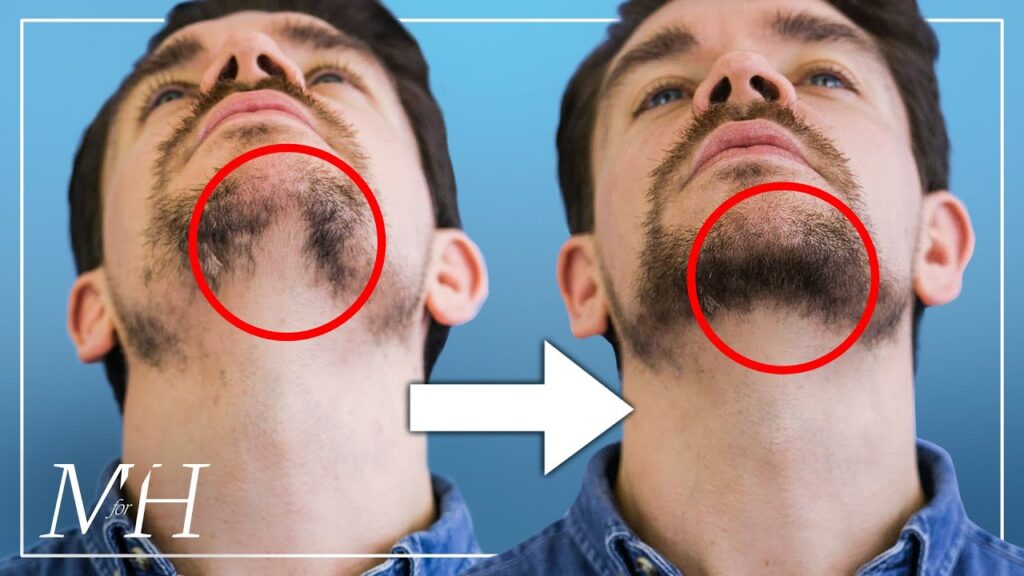Have you ever wondered why some men have perfectly even, full beards, while others struggle with patchy growth? Well, you’re not alone! Uneven beard growth is a common concern for many men, and at BeardsDude.com, we’re here to help you understand the reasons behind it.
In our upcoming article, we’ll dive deep into the root causes of uneven beard growth. We’ll explore factors like genetics, hormonal imbalances, and even lifestyle choices that can impact the growth and density of your beard. Understanding these factors is the first step towards finding solutions and achieving the beard of your dreams.
But that’s not all! We’ll also provide you with practical tips and techniques to address uneven beard growth. From grooming techniques that maximize coverage to natural remedies that promote healthy hair growth, we’ve got you covered. Our goal is to equip you with the knowledge and tools you need to overcome the challenges of patchy growth and achieve a beard that is both impressive and well-groomed.
So, stay tuned for our upcoming article on what causes uneven beard growth. Get ready to delve into the science and secrets behind achieving a fuller, more uniform beard. Remember, at BeardsDude.com, we’re dedicated to helping you become the best-bearded version of yourself. Uneven beard growth can be frustrating for those who desire a full and uniform beard. While some men are blessed with luscious and evenly distributed facial hair, others may experience patchy or sparse growth. In this article, we will explore the various factors that can contribute to uneven beard growth, helping you understand the underlying reasons for this common issue.

1. Hormonal Factors
1.1. Testosterone Levels
Testosterone, the primary male sex hormone, plays a crucial role in the development of facial hair. Higher levels of testosterone are associated with thicker and fuller beard growth. However, if your testosterone levels are lower than average, it can lead to slower and patchy beard growth.
1.2. Dihydrotestosterone (DHT)
Dihydrotestosterone (DHT) is a derivative of testosterone and has a more potent effect in stimulating hair follicles. It is known to promote beard growth and the development of secondary sexual characteristics in men. Insufficient levels of DHT can result in poor beard growth or patchiness.
1.3. Sensitivity to DHT
While DHT is crucial for promoting beard growth, some men may have hair follicles that are less sensitive to its effects. This reduced sensitivity can lead to uneven beard growth, with certain areas of the face having thicker hair while others remain sparse.
2. Genetic Factors
2.1. Family History
Genetics play a significant role in determining the thickness and distribution of your facial hair. If your father or other male relatives have a history of patchy or uneven beard growth, there is a higher chance that you may also experience similar patterns.
2.2. Genes and Hair Growth
Certain genes control the activation and suppression of hair follicles. Variations in these genes can influence beard growth patterns. Some individuals may have genes that promote dense and even beard growth, while others may have genes that hinder the development of a full beard.
3. Age and Beard Growth
3.1. Beard Growth During Puberty
During puberty, hormonal changes occur, including an increase in testosterone levels. This surge in hormones triggers the growth of facial hair. However, the initial growth may be inconsistent and patchy, gradually becoming more uniform over time.
3.2. Beard Growth in Adulthood
Beard growth typically reaches its peak in adulthood, around the age of 25 to 35. However, some men may continue to experience gradual improvements in density and coverage even beyond this age.
3.3. Beard Growth in Older Age
As men age, testosterone levels tend to decrease, which can affect beard growth. Some men may notice thinning or patchiness in their beards as they get older. Additionally, age-related factors such as reduced blood circulation and slower cell turnover can impact beard growth.
4. Health Conditions
4.1. Hormonal Imbalances
Certain medical conditions, such as thyroid disorders or hormonal imbalances, can disrupt the natural balance of testosterone and other hormones in the body. These imbalances can hinder beard growth and contribute to uneven hair distribution.
4.2. Skin Conditions
Skin conditions like alopecia areata, eczema, or psoriasis can affect the health of the hair follicles and disrupt beard growth. Inflammation, itchiness, and hair loss associated with these conditions can lead to patchiness in the beard.

5. Nutritional Deficiencies
5.1. Vitamins and Minerals for Beard Growth
A well-rounded diet rich in essential vitamins and minerals is vital for healthy hair growth, including beard growth. Nutritional deficiencies, particularly in vitamins like Biotin, Vitamin D, and Zinc, can negatively impact the development of facial hair.
5.2. Poor Diet and Beard Growth
A diet lacking in essential nutrients can weaken hair follicles and inhibit beard growth. Unhealthy food choices, high in processed sugars, saturated fats, and low in fruits and vegetables, can contribute to poor beard growth and patchiness.
6. Stress and Beard Growth
6.1. Cortisol and Hair Growth
Prolonged or chronic stress can disrupt the hormonal balance in the body, elevating cortisol levels. Increased cortisol levels can inhibit hair follicle activity and lead to hair loss or patchy beard growth.
6.2. Effects of Chronic Stress
Chronic stress can have a detrimental impact on overall health, including hair growth. Poor lifestyle choices, such as lack of sleep and unhealthy coping mechanisms, can further exacerbate the effects of stress on beard growth.

7. Beard Care Practices
7.1. Improper Beard Care Routine
Inadequate or improper beard care can contribute to uneven growth. Neglecting to cleanse, moisturize, and groom your beard regularly can lead to clogged follicles, skin irritation, and stunted hair growth.
7.2. Overuse of Styling Products
Excessive use of styling products or harsh chemicals can damage hair follicles and hinder beard growth. Chemical-laden products, such as low-quality waxes or gels, can cause dryness, breakage, and patchiness in the beard.
8. Environmental Factors
8.1. Sun Exposure
Excessive exposure to the sun’s UV rays can damage hair follicles and weaken hair growth. Prolonged sun exposure without proper protection can lead to dryness, breakage, and patchiness in the beard.
8.2. Pollution and Beard Growth
Environmental pollutants, such as air pollution or smog, can have a detrimental effect on beard growth. These pollutants can clog hair follicles, disrupt the natural growth cycle, and lead to uneven beard growth.

9. Medications and Treatments
9.1. Side Effects of Medications
Some medications may have side effects that impact hair growth, including beard growth. Certain drugs, such as those used for chemotherapy or hormone therapy, can cause hair loss or hinder the development of facial hair.
9.2. Medical Treatments Impacting Beard Growth
Medical treatments like radiation therapy or surgical procedures can inadvertently affect the hair follicles in the beard area, leading to patchy or uneven growth.
10. Trauma or Injury
10.1. Scars and Beard Growth
Injuries or trauma to the face, particularly those resulting in scars, can disrupt beard growth. Scar tissue can impede the growth of hair follicles, leading to uneven or sparse beard growth in affected areas.
10.2. Traumatic Hair Loss
Severe emotional or physical stress, such as accidents or surgery, can shock the body and disrupt the hair growth cycle. This shock can lead to temporary shedding or stagnation in beard growth, resulting in patchy or uneven growth.
11. Psychological Factors
11.1. Stress-related Beard Loss
Psychological factors, such as extreme stress or anxiety, can manifest physically, leading to hair loss or slowed beard growth. Stress-induced hormonal imbalances can impact the health of hair follicles and contribute to patchy beard growth.
11.2. Body Dysmorphic Disorder
Body dysmorphic disorder (BDD) is a psychological condition characterized by obsessive preoccupation with perceived flaws in physical appearance. Individuals with BDD may excessively focus on perceived flaws in their facial hair, leading to stress and grooming behaviors that can disrupt beard growth.
12. Lifestyle Choices
12.1. Smoking and Beard Growth
Smoking cigarettes can have a negative impact on beard growth. The toxins in cigarette smoke can restrict blood flow to the hair follicles, leading to weak or stunted hair growth and potentially contributing to uneven beard growth.
12.2. Alcohol Consumption and Beard Health
Excessive alcohol consumption can lead to dehydration and nutrient deficiencies, which can impede beard growth. Additionally, alcohol can disrupt hormone levels and inhibit the growth of facial hair.
13. Remedies for Uneven Beard Growth
13.1. Beard Growth Supplements
Certain supplements, such as biotin, vitamin D, and omega-3 fatty acids, can promote healthy hair growth, including beard growth. However, it is essential to consult with a healthcare professional before starting any supplement regimen.
13.2. Topical Treatments
Various topical treatments, such as minoxidil, have shown potential in stimulating beard growth in individuals with patchy or uneven beards. These treatments work by improving blood flow to the hair follicles and promoting hair growth. However, they should be used under the guidance of a healthcare professional.
14. Conclusion
In conclusion, there are numerous factors that contribute to uneven beard growth. From hormonal imbalances and genetic predispositions to age, lifestyle choices, and environmental factors, the causes of patchy or sparse beard growth vary from person to person.
Understanding the underlying reasons for uneven beard growth is the first step in addressing the issue. By identifying the factors that may be hindering your beard growth, you can take proactive steps to promote a healthier and more uniform beard.
At BeardsDude.com, we are dedicated to providing you with the information and resources you need to achieve your desired beard. From tips on grooming and beard care practices to expert reviews on products and remedies, we are here to support you on your beard journey.
Remember, growing a beard is a personal experience, and each beard is unique. Embrace the journey, celebrate your beard in all its variations, and join our community of bearded individuals who appreciate the art and science of facial hair. Together, let’s explore the multifaceted world of beards and discover what works best for you!
